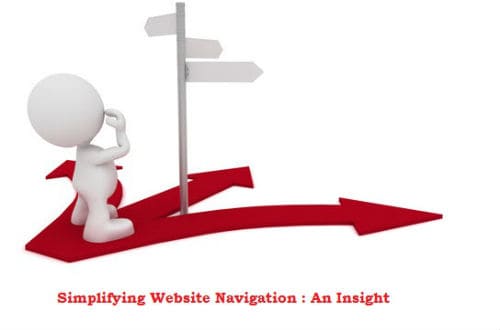
In this era where online shopping has become a daily routine, website design is an integral part of the business. Derek Halpern (Social Triggers) collected feedback from 15 participants on the effect the website design has on the online purchases. This website was purposely designed badly. 94% of feedback was concentrated on the design and layout of the website and 6% was concentrated on the business aspect. The most common issues encountered were complicated layout and absence of navigation aids. This led to low trust of customers in the website.
Here are some common web design layout mistakes and quick fixes for them:
Three Clicks Rule
There is no need for the website navigation to be complicated. In fact, simple navigation is the most effective one. The ‘3-Click Rule’ is the golden rule of website navigation. This rule states that all the pages of your website should be accessible within 3 clicks or less. Customers and the search engine crawlers do not have the patience to go beyond three clicks. Any information or content that is beyond three pages is not likely to get seen and for many people it does not exist.
Use Of Tags To Categorize Pages
Organizing an array of products or services can get difficult at times. Content of any website is expected to be unique; however, the navigation of the website is supposed to be simple and predictable. Poor and complicated website layout will turn off the users who are not able to find what they are looking for on your website. An easy way to structure pages is to create an A to Z index of the pages. Ofcourse, this is done on the basis of some fatal assumptions; this implies that the users know what exactly they are searching for and they know the exact category or section on the website where they will find it. As these conditions are rarely true, the best way to organize web page content perfectly in the navigation bar is to start with the broad terms that eventually become more specific.
Assigning pages to every category requires the use of tags. In website navigation, there are three important aspects : crucial, optional and irrelevant. Crucial categories are the categories that are useful for all the users and have very little or no overlaps. For example, the crucial tags for a clothing website would be ‘Men’s’, ‘Women’s’ and ‘kids’’. Only with the use of crucial tags, the user should be able to locate the relevant information.
Optional tags are the tags that further refine the search results, but they are not necessary for all the users. In case of the above mentioned example of a clothing website, an optional tag would be the brand name. When the user has selected the gender (‘Men’s’, ‘Women’s’ or ‘kids’’), and the type of clothing (‘pants’, ‘shorts’, ‘t-shirts’), they will be presented with the option of selecting the brand. There is a possibility that the user may not select an optional tag and simply browse all the items present in the Men’s, Women’s or kids’ sections. However, if required the option is available to refine the search further.
Irrelevant categories, as the name suggests, are not relevant to the users and are utilized for organizational purposes on the back-end of the website. These type of tags comprise of the word count and date added.
Maintain Consistency
Website navigation should be displayed on the same location on every web page. It is also important to maintain the same style, type and color scheme. This will enable the users to get familiar with your website and they will feel comfortable in browsing your website. If the navigation option jump from the top to the left, if it disappears or if the color scheme changes for every section, the visitors will get confused and frustrated. As a result of this, they won’t prefer using your website for the next time.
Navigating To The Home Page
On every page of the website, there should be an option to navigate to the home page immediately. This can be done by providing with this option: ‘click here to return to the home page’ or the user can return to the home page simply by clicking on the logo. This provides users with the option to start their search all over again and explore the website further.
Create A Sitemap
Sitemaps fulfill multiple functions. They provide the users with an overview of your website and they also help the search engine crawlers in navigating within your website. In fact, if the sitemap is not incorporated, there might be a serious threat to your search engine rankings. The best thing about the sitemap is that it is extremely simple to generate. There are many online websites for creating a sitemap. All you have to do is, add the sitemap to the ‘public_html’ folder of your website.
Conclusion
The things mentioned here constitute only the tip of the iceberg. Investing time in organizing your website properly will make it easier for the users of your website to find the exact information or products that they are looking for. Customer experiences can be highly volatile when it comes to judging your website. A poorly structured website might cost you countless customers and it might create a negative effect on your search engine rankings.






